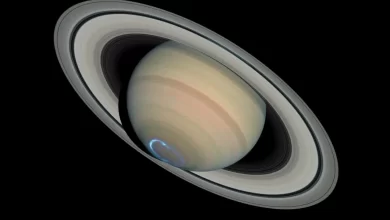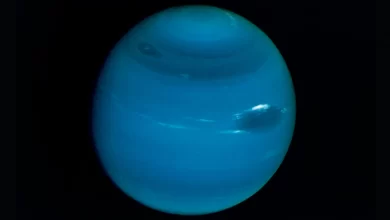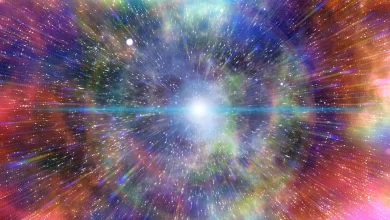Venus is the sixth largest planet in our solar system and the second planet from the sun. Venus is named after the Greek goddess of love and beauty, possibly because it is the brightest planet known to the ancients. Venus has been known since prehistoric times and, with the exception of the sun and the moon, it is the brightest object in the sky.
- If you could stand on the surface of Venus, you would experience 95 times the atmospheric pressure than on earth, the equivalent to the pressure found at a depth of about 1 km (0.6 miles) in earth’s oceans.
- The rotation of Venus is so slow on its axis that a day is longer than its year. It completes one rotation in 243 earth days.
- Venus completes one revolution around the sun in 225 earth days
- Venus is the hottest planet in our solar system. The surface of the planet has an average temperature of 900 degrees Fahrenheit (465 degrees Celsius).
- The atmosphere of Venus is so hot it would cook a pizza in just seven seconds.
- The Russian spacecraft Venera 1 was the first mission to Venus by humans. It was launched in February 1961. It flew past Venus on 19 May of the same year. However, it was not successful.
- The first successful planetary space probe was the USA’s Mariner 2, which flew past Venus in 1962.
- Till now, there have been 46 missions to Venus, out of which 16 failed, 26 were successful, and 4 are operational. The countries that sent spacecraft to Venus are Russia, United States, Japan, and the European Union.
- The snow that pores onto the surface of Venus is of metals, and rains are of sulphuric acid. The two types of metal(researched so far) that pores like snow are galena and bismuthinite.
- Neither Venus and nor mercury has a natural satellite, i.e., moon.
- Venus spins in the opposite direction than compared to earth and other planets in the solar system. Earth rotates from west to east, Whereas Venus spins from east to west. The other planet that spins backward is Uranus.
- Venus has the most number of volcanoes than any other planet in the solar system. There are over 1600 major volcanoes and 1 lakh to 10 lakh small volcanoes.
- The reason Venus is so bright is because the clouds are so dense that light bounces off them, making Venus appear bright to us on earth.
- Venus does not have any seasons at all.
- With respect to the earth’s the orbit of Venus is a bit tilted. That’s why we don’t see a transit every orbit.
- Venus is roughly of the same size as earth; it is just slightly smaller than our blue planet. The diameter of Venus is 12,104 km, Whereas the diameter of earth is 12,742 km.
- Venus is named after the ancient Roman goddess Aphrodite who is the goddess of love and beauty.
- A pancake dome is an unusual type of lava dome found on the planet Venus. Pancake domes are between 10 and 100 times larger than volcanic domes formed on earth.
- The total distance of Venus to the sun is 108.94 million kilometers. Which stands to be 0.7 astronomical units (1AU= distance of the sun from earth).
- The gravity of Venus is 8.87 m/s² which is almost 91 percent than that of earth.
- Venus is the brightest natural object in the sky at night, just after our very own moon.
- At the very top of the cloud layers on Venus, wind speeds reach 355 km/hour. As you descend through the cloud layers, though, the wind speeds up. In the middle layer, the winds can reach speeds of more than 700 km/hour. That’s faster than the fastest hurricane speed ever recorded on earth.
References
- Britannica-Venus planet
- Solarsystem.nasa.gov(the rotation of venus)
- Solarsystem.nasa.gov(temperature of venus)
- Mocomi.com(Pizza in 7 seconds)
- Wikipedia-Venera 1
- wikipedia-List of missions to venus
- Volcano.oregonstate.edu(Volcanoes on 1600 major volcanoes)
- Wikipedia-Venus
- Wikipedia-Pancake Dome
- Space.com(How to live on venus)
- Universetoday.com(windspeed on venus)






